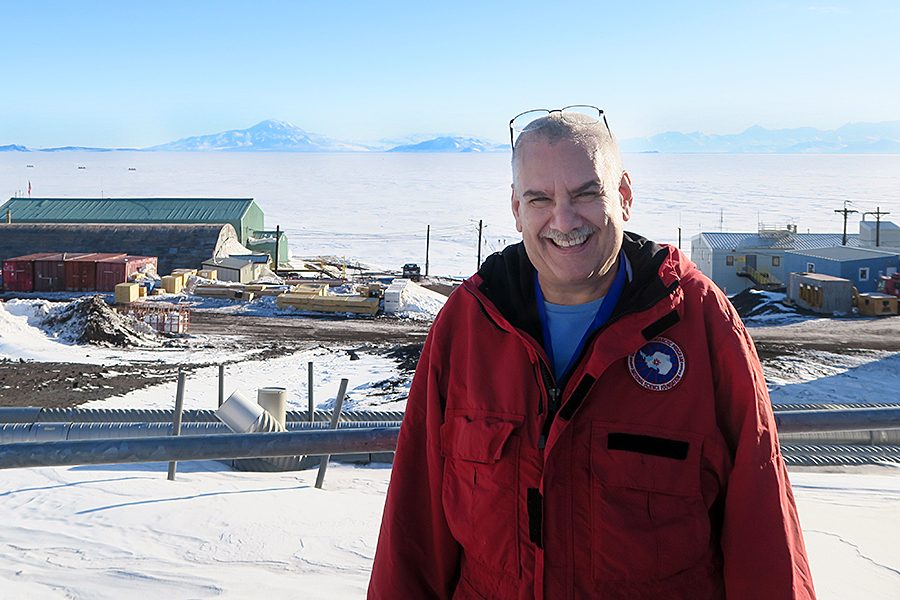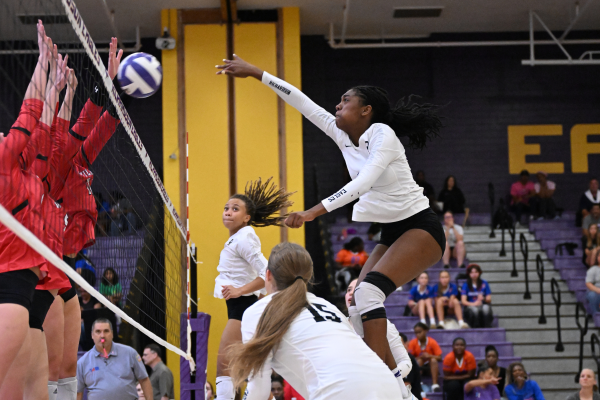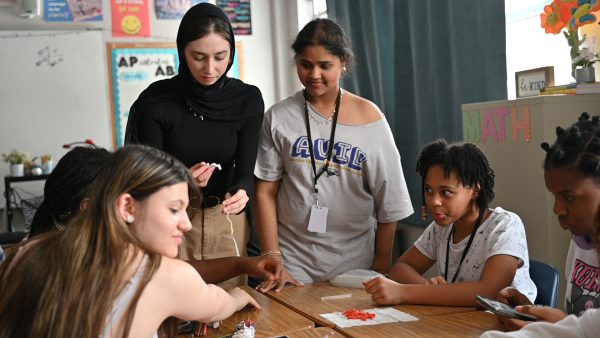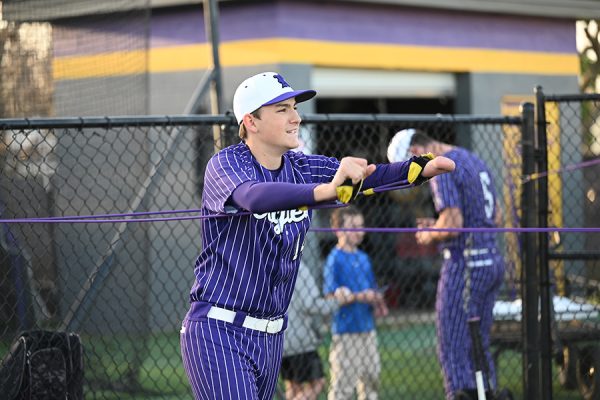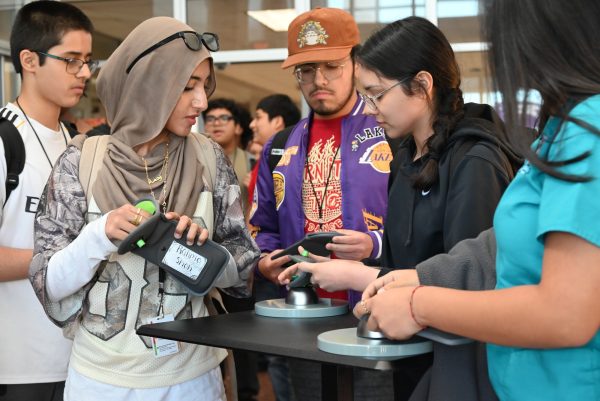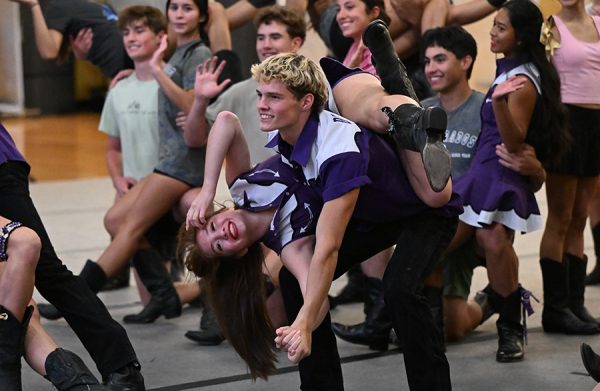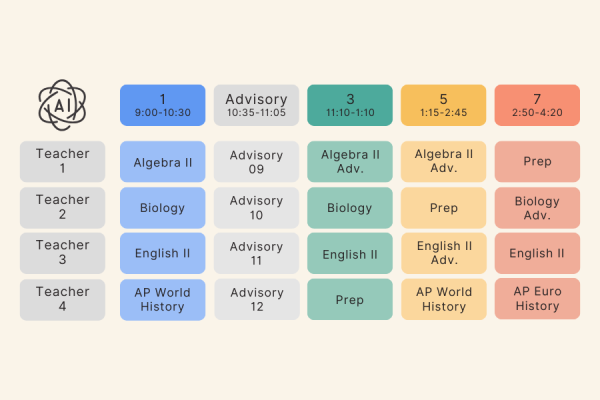Dr. H Chosen for PolarTREC Expedition for Antarctica Research
Luz Obregon eagerly pulled an oversized suit over her head meant to protect humans from some of the harshest environments on earth – the same suit physics teacher George Hademenos will wear during an expedition to Antarctica in November.
As an applicant to the PolarTREC program last December, Hademenos was selected from hundreds of applicants to go on an expedition to Antarctica during the 2017-2018 season. PolarTREC provides K-12 teachers an educational experience to participate in polar research, working closely with scientists to improve science education.
Hademenos will be stationed at McMurdough station along with a group of researchers from the University of Wisconsin-Madison including Carol Costanza, Dr. Matthew Lazzara, Lee Welhouse and David Mikolajczyk.
“I was beyond excited when I discovered I was selected,” Hademenos said. “It was almost as if I had won an Academy Award. I was very happy. “
Despite the slim chances of being selected, Hademenos was still keen to apply.
“I’m always looking for opportunities to bring unique experiences back to my class,” Hademenos said. “I always say, if you don’t apply, the answer is definitely no. I was well aware of the odds, and believe me, I’ve been rejected and turned down for these things before, but that doesn’t stop me from wanting to at least try to do it, and so I did. And fortunately for this one, it worked out very well.”
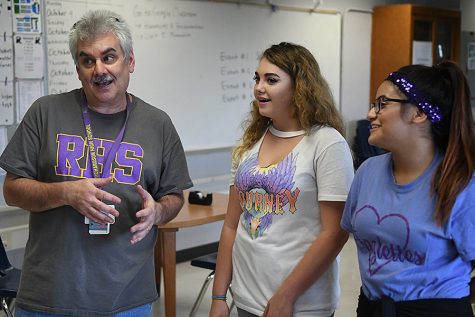
Funded by the National Science Foundation, the process began with an open online application which received over two hundred teacher applicants. Of those, about 40 teachers were selected for the next stage of the process, which was an interview with two prospective faculty polar researchers. Hademenos was picked by Constanza, one of those faculty researchers.
“Dr. H showed his enthusiasm throughout the interview process,” Costanza said. “He seemed very excited at the opportunity to go to Antarctica with us and had great plans for disseminating the experience to the public.”
Hademenos’ physics background and desire to connect to the public caught Costanza’s eye, which was a factor in being selected.
“We appreciated his physics background since a lot of weather understanding starts at the physics level,” Costanza said. “He seemed to really care about sharing the experience with as many people as possible, which was admirable.”
Costanza said she is looking forward to spending four weeks with Hademenos in Antarctica because it will be his first time experiencing such an environment.
“It will be fun to witness the excitement of someone going to Antarctica for the first time,” Costanza said. “I’m also looking forward to continue collaborating with him after the expedition.”
Along with Costanza, researcher Matthew Lazzara was one of the many who helped select Hademenos out of the many applicants.
“When Dr. H. applied, he had lots of competition,” Lazzara said. He has so many commonalities between what we do and the goals he wanted to accomplish that we do. I also did not make this decision alone. My team – especially Carol on my team – also played a key role in selecting him.”
While in Antarctica, Hademenos and the researchers will be studying the Antarctic Automatic Weather Station (AWS) network which is equipped with specialized sensors mounted at various locations around Antarctica to measure weather variables such as temperature, humidity, and wind speed.
“We’ve been preparing for the trip by creating field packets, shipping equipment, planning site visits, and finishing any last minute work that needs to be done before leaving the office for seven weeks,” Costanza said. “Finally, we’ve been doing some training with Dr. H and a few others that haven’t been to Antarctica before.”
The team is planning to install a new Automatic Weather Station (AWS) at the new Phoenix Airfield in McMurdo, Antarctica. Some AWSs will be repaired during the visit as well. Some of this work includes raising the AWS to prevent them from being buried in the snow. Some sites have actual repairs to do – including replacing damaged sensors and installing new power systems.
“There may have other new things to test out as well,” Lazzara said. “We are always evolving our exact task list of items to accomplish on the ice.”
As a first time traveler to Antarctica, Hademenos must make preparations ranging from adapting to the harsh environment to personal responsibilities.
“Because you’re going into a very harsh and extreme environment, you need to make sure that you have the proper clothes and accessories you need to take with you,” Hademenos said. “There’s a lot of planning that goes on the teacher’s side as well as from the personal side, such as how am I going to do well and make sure that I’m safe and healthy. In short, there are a lot of things that are going through my mind right now “
Hademenos needs to be “PD’d,” or physically qualified in order to go to Antarctica. He was in and out of the doctor’s office for extensive check-ups and medical tests including physical, mental and dental evaluations to ensure his health was appropriate and would adapt to the harsh environment.
“My entire summer was basically spent in doctor’s offices and dentists,” Hademenos said. “I had to undergo a lot of testing, lab work and exams, but it’s a once in a lifetime opportunity, so it was all worth it.”
While in Antarctica, Hademenos hopes to be involved with educational outreach in order to educate the public about his trip. He is going to develop blogs and plans on doing a Skype session with some of his classes.
“I want to provide a chance for my students to be able to see a place where they might never go, in order to learn with me and to travel along with me, at least virtually,” Hademenos said. “Learning and education is all about new experiences. So, I want my kids to come along with me and enjoy this experience. I want them to ask questions and to make observations. That’s what any teacher would want for their students, to engage in the learning experience.”
Hademenos would like to visit historical landmarks on the continent, like the remnants of equipment and belongings of past scientists and researchers who were working in the area to learn about how experiments were carried out in the past.
“It was in the early 1900s when scientists first made the treck to first discover Antarctica,” Hademenos said. “They still have the huts that were used by these explorers and settlers, and they still have preserved all of the materials they used from a scientific standpoint. They suffered a lot in exploring this territory and I want to see how they did it.”
Hademenos hopes that he can take advantage of this once in a life-time experience not only to educate himself, but the public and his students as well.
“It’s one of those very unique experiences, so I’m anxious to tackle this opportunity and to see and try to do as much as I can in the time that I’m there and never look back,” Hademenos said. “I want to be able to walk away from it and say ‘you know, I did everything I could, and I tried to reach as many kids as I could,’ and hopefully begin a dialogue about the world in general, like global climate and global warming. It’s always good to use these opportunities to stimulate a discussion.”

